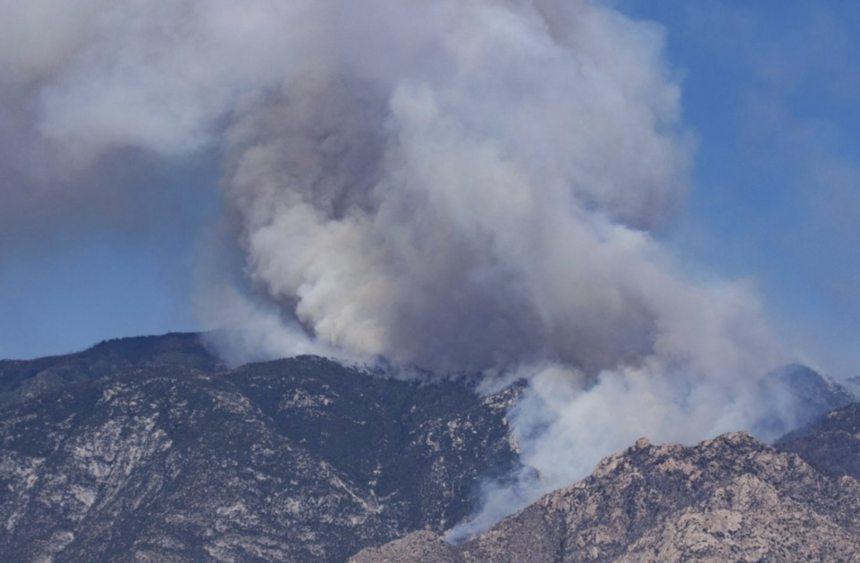Crews on Arizona wildfires contend with wind-driven flames

FLAGSTAFF, Ariz. (AP) — Wildfires in Arizona are typical this time of year, but high winds have been a key factor in driving the size of the blazes that are threatening rural communities, state highways and popular recreation spots.
A wildfire in east-central Arizona that had already burned 139 square miles (360 square kilometers) was expected to grow Wednesday because of predicted winds of up to 30 mph and low humidity.
Weather forecasters say the wind will stick around for a couple of weeks before temperatures build and the rain that the monsoon season is known for starts falling — part of the usual pattern in Arizona and New Mexico.
“It’s mid-June right now, so this is really the heat of the battle in the Southwest right now,” said Rich Naden, fire weather meteorologist with the U.S. Forest Service in Albuquerque, New Mexico.
The fire burning in the Tonto National Forest outside metropolitan Phoenix was the largest in the U.S. on Wednesday. It ranks seventh among the largest wildfires in Arizona history.
Red flag warnings were in effect for eastern and southern Arizona, where another fire is raging through the mountains overlooking Tucson in the Coronado National Forest. That one has burned 25 square miles (64 square kilometers). Firefighters have secured 40% of the perimeter.
Another fire in the Kaibab National Forest north of the Grand Canyon grew to 74 square miles (192 square kilometers) with 3% containment. Coconino County Sheriff’s officials say up to 10 people who live in homes and ranches in the House Rock Road area were evacuated Wednesday afternoon when the approaching wildfire reached its trigger point.
“What we’re hearing for long-range forecast is warm and dry and continuing conditions like we’ve endured,” fire information officer Gerry Perry said.
About a half-dozen rural communities near the three fires have been evacuated. No structures have burned.
The fires are among nearly 1,000 that have broken out across Arizona so far this year, charring far more land to date than this time last year. Many of those are small fires that are quickly contained and tied to human activity. The culprits often range from target shooting and grinding tools to barbecue grills, weed eaters, cigarette butts and fireworks.
“It’s not the amount of acreage burned, I don’t want to minimize that perspective, but it’s the amount of human-caused fires that is of concern,” said Tiffany Davila, a spokeswoman for Arizona’s forestry department.
New Mexico is pacing well behind, with more than 400 wildfires burning 40 square miles (103 square kilometers) as of Saturday, the latest figures posted on the Southwest Coordination Center’s website.
The outlook for Arizona is above-normal potential for wildfires in June and July, then it shifts to the western side of New Mexico, Naden said. August brings a significant potential for large wildfires in both states, he said.
Lightning and a vehicle that pulled off a state highway started two of the larger wildfires burning in Arizona. The cause of the one north of the Grand Canyon is under investigation.